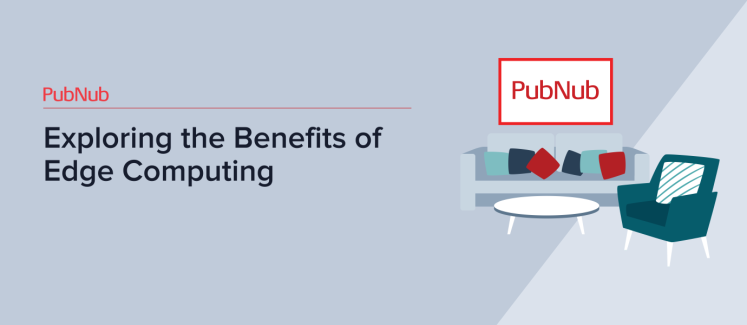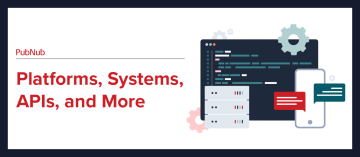
Edge messaging, sometimes called edge computing, refers to delivering data and messages directly to the edge of a network, closer to the end-user or device, rather than routing them through centralized servers.
Given the benefits of edge computing, this blog post delves into the technical details and benefits of partnering with an edge messaging service provider.
Faster Data Transfer and Reduced Latency with Edge Computing
One of the main benefits of edge computing is faster data processing and transfer. Edge messaging utilizes specific technologies such as HTTP/2, application layer protocols, and TCP flow control, which ensure rapid data transfer. By delivering data and messages directly to edge devices on the edge of the network, edge messaging leads to low latency, reducing network congestion and improving response times. These advancements are particularly crucial for applications like video conferencing, online gaming and Internet of Things (IoT) devices that demand real-time communication and robust connectivity for superior performance.
Improved Reliability Over Server-Based Messaging
Edge computing offers improved reliability compared to traditional server-based messaging. By distributing data and messages across the network, edge computing ensures that no single point of failure can bring down the entire system. This makes it ideal for applications that require high availability and reliability, such as financial services, healthcare, and emergency response systems.
Reduced Operational Costs Due to Decentralized Servers
Edge computing can be a cost-effective solution for app developers. By eliminating the need for centralized servers or on-premises servers, edge messaging reduces infrastructure and maintenance costs. A recent case study by Gartner found that edge computing implementation could lead to significant cost savings, reducing infrastructure expenditure by up to 20%. Furthermore, edge messaging optimizes data transfer, thereby cutting costs related to data transfer over long distances.
Enhanced Security & Privacy for Sensitive Data
By distributing data and messages across the network, edge messaging reduces the risk of data breaches and cyber-attacks. Additionally, edge messaging can provide secure communication channels that are resistant to eavesdropping and interception, making it ideal for use cases that handle sensitive data, such as healthcare and financial services. The less time data spends exposed to the outside world, the harder it is for bad actors to wreak havoc on your business.
More Scalability to Handle Volumes of Data During Usage Spikes
Edge messaging also offers more scalability compared to traditional server-based messaging. By distributing data and messages across the network, edge messaging networks enable developers to scale their applications quickly and easily. This is particularly important for use cases that experience spikes in usage, such as e-commerce websites or social media platforms.
Better Edge Analytics for Decision-Making
Developers can quickly access analytics and gain insights into user behavior and system performance in real time. This enables more informed decision-making on-the-fly about optimizing their applications and improving the user experience.
Increased Flexibility for Emerging Technologies
Technologies like IoT and blockchain require more flexible and distributed architectures. Because there’s no need for centralized servers, edge messaging enables developers to create more distributed and decentralized applications.
Reduced Latency Leads to Better App Performance
Edge messaging reduces latency by deploying edge servers closer to the connected devices or users that need them which reduces the time it takes for data to travel across the network, resulting in faster response times and better application performance. This is particularly important for applications that require real-time, interactive communication, such as video conferencing, online gaming, and IoT devices.
Increased Resilience to Outages
When edge servers are deployed closer to the end user or device, if a network outage occurs, the servers can continue to function, providing users with access to the information they need. This uninterrupted connectivity improves the overall resilience of the application, leading to greater reliability and availability and ultimately, user satisfaction.
Greater Control for More Customized Apps
Edge messaging provides greater control over how data and messages are processed and delivered because of the utilization of edge servers that are specifically designed to handle the exact requirements of the application. Leveraging this feature enables developers to customize their applications to meet the unique needs of their users, resulting in more personalized and relevant experiences.
Reduced Bandwidth Requirements Means Lower Costs
Another benefit of edge messaging is that it can also help reduce bandwidth requirements by delivering data and messages directly to the edge of the network. This reduces the amount of data that needs to be transmitted across the network, resulting in lower bandwidth and computing power requirements, reduced workload on servers, and ultimately, reduced costs. This is particularly important for applications that handle large amounts of data, such as video streaming and IoT devices.
Edge Messaging for Real-Time Experiences
As edge messaging becomes more widely adopted, we can expect to see a shift in app development away from centralized data centers towards more decentralized and distributed architectures. This will enable developers to create faster, more reliable, and more secure applications that provide a better customer experience.
Operating large-scale edge messaging infrastructure is a very complex distributed systems computing problem. With PubNub’s Edge Messaging Network this becomes easy. Our real-time edge messaging network currently supports over 800 million monthly active users with trillions of messages being sent. With over 15 points-of-presence (PoPs) across the globe, 99.999% uptime SLAs, redundancy, geographic server distribution, geo-routing, latency monitoring, and enterprise-scale and reliability, you’ll never have to worry about building infrastructure or disruptions caused by spikes in traffic.
Try us for free or let’s chat to discuss your edge computing use case.


